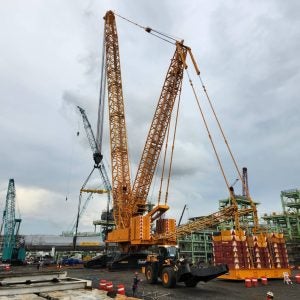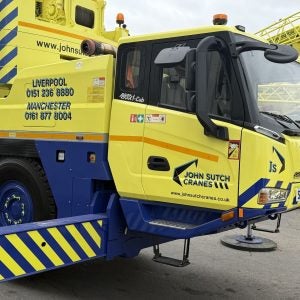Over its long development, the US federal cranes and derricks rule addressed a number of contentious issues. One of the final ones, addressed in recent revisions, was whether certificates issued under the rule would ‘qualify’ crane operators. The final rule makes clear that the certificate—now required for operators in all states covered by the rule—show an operator’s basic competency.
The certificates do not show that an operator is properly trained for every crane they might work on. Instead, OSHA—or the courts, in the case of an accident—will expect employers to show both that their operators are certified, and how they have evaluated operators.
The SC&RA’s new form comes as an interactive PDF in mobile and tower crane versions, and provides a checklist for this process, allowing employers’ evaluators to assess operators for different classes of crane and configuration, and other aspects of the crane.
Both versions of the form ask for the make and model on which the operator has been evaluated. The mobile crane version differentiates between rubber-tyred and crawler cranes, and assess the operator’s familiarity with different configurations: jib inserts or guying systems for wheeled cranes, for example, or wind jibs or derrick attachments for crawlers.
The tower crane form does not need to evaluate different configurations in quite the same way as the mobile crane form, but still differentiates between hammerhead, luffing, self-erecting, and flat-top cranes. Both forms ask evaluators to assess the operator’s familiarity with the crane’s operation, software, operational aids, shutdown, and safety devices.
Finally, the form references specific sections of the cranes and derricks rule, asks the evaluator to determine if the operator: ‘Has the skills and knowledge, as well as the ability to recognize and avert risk, necessary to operate the aforementioned equipment safely, including those specific to the safety devices, operational aids, software, and the size and configuration of the equipment; has the ability to perform the hoisting activities required for assigned work including blind lifts, personnel hoisting, and multi-crane lifts; and, understands and can apply the equipment’s load charts as well as the manufacturer’s procedures.
The form provides space for the employer’s evaluator and the controlling entity’s evaluator to record their name, company, and date of evaluation. A controlling entity is described by OSHA, in its 2014 Small entity compliance guide for the final rule for ‘cranes and derricks in construction, as a prime contractor, general contractor, construction manager or any other legal entity which has the overall responsibility for the construction of the project—its planning, quality and completion.
Announcing the form, the SC&RA said “the forms assist industry stakeholders in meeting the stipulations set forth in Section 1926.1427(f)—Evaluation. Notably, the section states that employers must, through an evaluation process, ensure operators are qualified to operate the machine to which they are assigned.”
Beth O’Quinn, SC&RA senior vice president, Crane & Rigging, explained, “When OSHA released its final rule last November, we immediately engaged our Crane & Rigging Group Safety and Tower Crane committees to develop Qualified Operator Evaluation Forms for both mobile and tower cranes. After receiving countless industry requests to obtain the proprietary forms, we’ve decided to make it free and publicly available to achieve a consistent standard across the industry.”
The forms can be downloaded from the SC&RA here.






